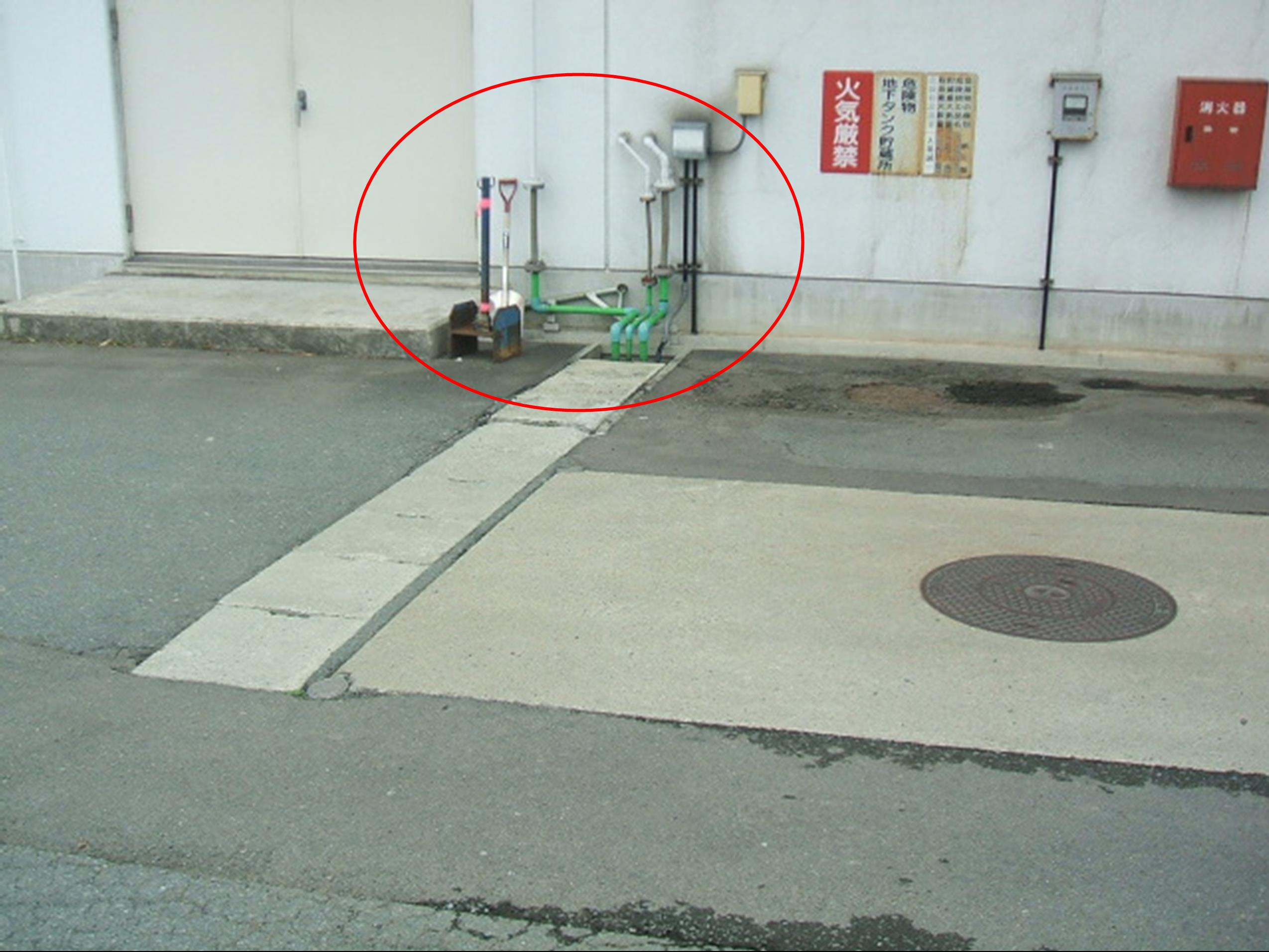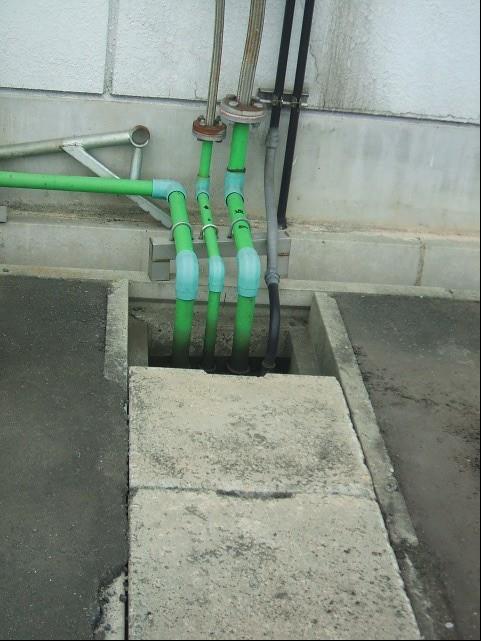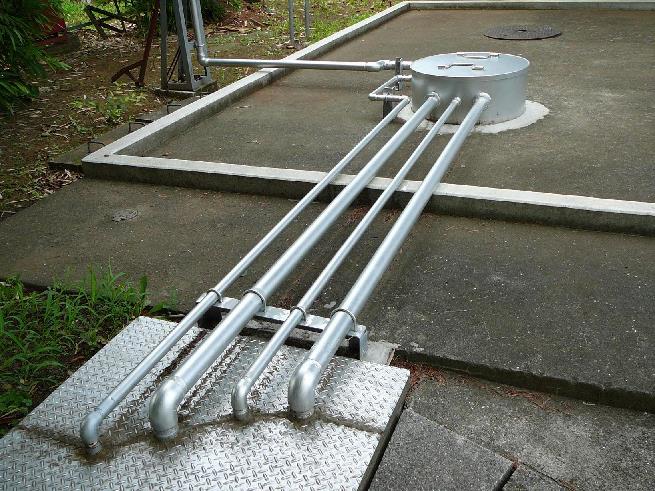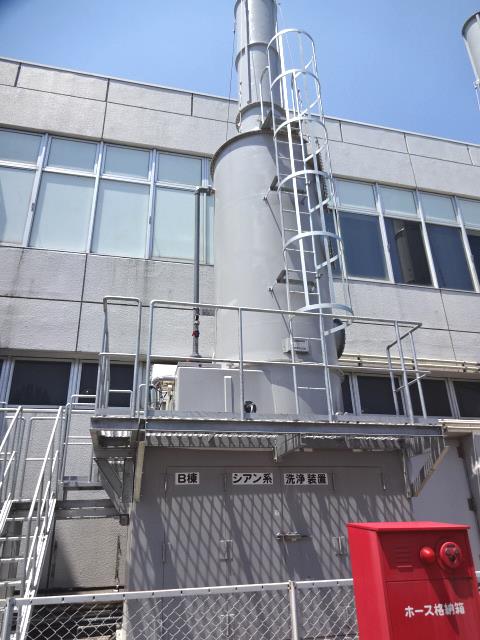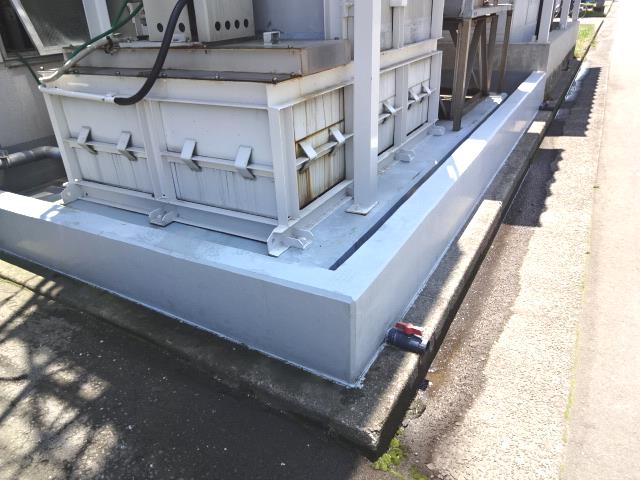Environmental Report 2019
Environmental Risk Management
The JAE Group identifies important environmental risks from external and internal issues, environmental impacts, environmental laws and regulations related to operations, etc., formulates a plan of action, and pursues countermeasures.Emergency Response
For tasks with a high risk of significantly affecting the environment, we have established emergency response procedures for each task, and we conduct procedure tests and drills as well as confirm procedure effectiveness.| Transfer of fuel from tank truck to fuel tank (discharge due to disconnection of hose, etc.) |
| Operation of waste gas scrubber (discharge of air pollutants caused by abnormality) |
| Use of harmful substances in plating process (leakage to floor surface, pits, etc.) |
| Storage of harmful substances in storage tanks (leakage/discharge due to damage) |
| Leakage of refrigerant chlorofluorocarbons from refrigerators and air conditioners |
Prevention of Soil and Groundwater Pollution
The discovery of soil and groundwater contaminated with hazardous substances is on the rise in Japan due to the redevelopment of former plant sites and voluntary surveys. Since countermeasures after contamination has already occurred take a vast amount of time and money, this is gaining recognition every year as a massive social problem, and related laws and regulations are being put in place.The JAE Group conducts risk assessments of its facilities that handle toxic substances and those associated with fuel oil, and takes countermeasures to prevent contamination, such as by double-walling underground storage facilities and pipes. This section introduces several activities to prevent contamination.
2010: JAE assessed risk of leakage and seepage into the soil with regard to its facilities that handle toxic substances and fuel oil-related facilities, then began to raise its underground pipes, installing them above ground (JAE Akishima Plant)
2013: The JAE Group commenced inspections with regard to the aging and useful lifespan of environment-related equipment and at facilities designated for storage of toxic substances, and regularly replaces the main valves on collateral pipes and other parts at proper intervals so as to reduce the risk of leakage. (JAE Akishima Plant)
2014: The above-ground installation of pipes, that had run underground, for toxic substances and those related to fuel oil, which had been assessed as high risk, was completed. Accompanying equipment upgrades to clean emissions generated in the plating process, the wastewater cleaning process tower's retainer walls were recoated. (HAE)
2015: In order to construct the Comprehensive Assessment and Testing Building, the former plant was demolished. Soil testing confirmed that there was no contamination. (JAE Akishima Plant, former site of No. 4 plant)
2018: Acid and alkaline treatment tanks were placed above ground and water pipes in the pit were replaced to prevent environmental pollution (HAE).
Japan’s Water Pollution Prevention Act has established structural standards and mandatory periodic inspections of facilities that require the use of harmful substances to prevent groundwater contamination. Periodic inspections conducted by the JAE Group found no serious damage that could lead to contamination. Minor damage is repaired soon after discovery, and steps are being taken to mitigate risk.
Compliance with Environmental Regulations
The JAE Group has some 70 environmentally related regulations on record for which compliance status must be constantly ascertained. The Group periodically checks public bulletins from local and national government documents for revisions to the regulations it has on record. And, it periodically conducts a study on the compliance status for mandatory notifications and reports.In fiscal 2018, legal registration forms and compliance status survey forms were shared within the Group. We have also strengthened our legal compliance system by holding practical legal training to improve knowledge of laws and regulations for those in charge of legal and regulatory research at each Group site.
| Air Pollution Control Water Pollution Sewerage Law Municipal ordinances |
The JAE Group has set its own voluntary standards for air and water quality. Its target values are about 20% below the maximum values allowed by the Japanese laws and regulations listed above. |
・Compliance Record for Fiscal 2018
In fiscal 2018, the JAE Group received no compliance-related notices or orders from government authorities for exceeding regulatory values in areas such as gas emissions, water discharge, noise and vibration. However, the Akishima Plant observed minor but perceptible excesses of SS values (standard value of less than 300 mg/L), the standard value for amount of normal hexane extract (standard value of 30 mg/L or less) and pH values (standard minimum value of 5.7; maximum value of less than 8.7). The cause was thought to be human sewage within the plant. The Akishima Plant has informed the local wastewater authority of Akishima-shi of the situation and is now pursuing corrective measures.
